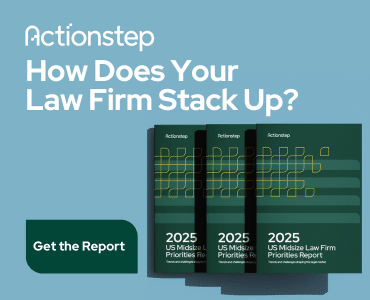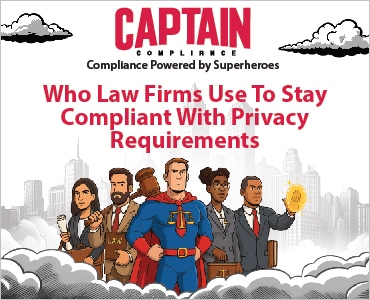Litigators: Ask these 10 questions before relying on Microsoft Purview for eDiscovery.

Table of contents
- What Is Microsoft Purview?
- 10 Questions to Ask Litigation Clients
- 1. What license level are you using, and do you know what features come with it?
- 2. Are all relevant data sources connected, including third-party systems?
- 3. Do you understand Purview’s file indexing limitations?
- 4. How do you handle unindexed files?
- 5. What’s your plan for modern attachments and hyperlinked documents?
- 6. Where are linked files stored, and do you have access to them?
- 7. Do you retain all necessary versions, and for how long?
- 8. How do you manage data in M&A or divestiture scenarios?
- 9. Have you tested your export capabilities, especially at scale?
- Why These Questions Matter
- Related Reading on Attorney at Work
As more corporate legal teams turn to Microsoft Purview for internal investigations and electronic discovery, there’s an assumption that the platform will handle it all — automatically, accurately and defensibly. But many organizations don’t fully understand Purview’s technical boundaries. These gaps can quietly jeopardize discovery outcomes.
What Is Microsoft Purview?
Microsoft Purview combines the former Azure and Microsoft 365 compliance products into a single brand to provide a unified set of data security, governance and compliance tools that users can monitor from a single portal. Organizations and legal teams use it to manage data holds and support eDiscovery, data retention, and regulatory compliance efforts.
10 Questions to Ask Litigation Clients
For law firm litigators and discovery counsel, the limitations may not become visible until it’s too late. That’s when data is missing, overcollected or improperly exported. The best way to prevent downstream problems is to ask clients the right questions upfront. Here are 10 of the most important ones, along with why the answers matter.
1. What license level are you using, and do you know what features come with it?
Microsoft’s eDiscovery functionality varies significantly depending on the license tier. Many clients don’t realize that basic tools available in E3 licenses lack critical features, such as full legal hold capabilities or advanced file versioning controls, which come with E5 or equivalent licenses. Without those features, defensibility can suffer, and surprise costs may arise from gaps that must be covered by manual workarounds.
2. Are all relevant data sources connected, including third-party systems?
Microsoft Purview handles data inside the Microsoft 365 ecosystem well. But many organizations collaborate in external systems like Slack, Google Drive, Zoom, and proprietary HR or finance platforms. These often require third-party connectors, which can be costly, inconsistent or prone to metadata loss. Without an up-to-date data map and a mechanism to collect this data, critical content may be missed.
3. Do you understand Purview’s file indexing limitations?
Purview doesn’t index every file equally. For example, large Excel files over 4MB may be partially indexed or skipped entirely. Some file types may be too complex or large to be searchable, leaving them unindexed. Without a plan to address this, keyword-based searches can silently fail, creating the risk of under-collection and incomplete productions.
4. How do you handle unindexed files?
Clients often don’t realize they have a choice to make. They can ignore unindexed files, process them manually, or include everything in the export. Each option has consequences. Excluding unindexed files may miss key evidence. Processing them manually takes time. Including them all can overwhelm downstream reviewers and inflate costs. Whatever path is chosen, it should be deliberate, not accidental.
5. What’s your plan for modern attachments and hyperlinked documents?
Microsoft has introduced support for hyperlinked documents, also known as modern attachments, but bugs and functional gaps remain. A major concern is version control. Which version of the linked document was active at the time of the email or chat? If the version has rolled off due to retention settings, it may no longer be accessible. Worse, if the receiver of the hyperlink is placed on hold but not the sender, the file referenced by the hyperlink may not be preserved.
6. Where are linked files stored, and do you have access to them?
Linked files can live in personal OneDrive accounts, shared SharePoint folders, or group-based repositories. If a file resides in a deactivated user account, such as from a former employee, it may not be retrievable without special permissions or advance planning. Identifying storage locations and validating access should be part of any defensibility assessment.
7. Do you retain all necessary versions, and for how long?
Version history settings in Microsoft 365 can vary by tenant and document library. Some clients may keep only the last 100 or 500 versions of a document. For regulated industries or for matters where contemporaneous versions are critical, this may be insufficient. Retention settings should be aligned with legal obligations before collections begin to ensure contemporaneous versions are captured and retained, saving them from “roll off.”
8. How do you manage data in M&A or divestiture scenarios?
User accounts and email addresses often change during a merger or divestiture. Purview may map migrated email content to new aliases, which can trigger disputes over authenticity and completeness. Journal-based email and shared mailboxes can be especially tricky, as they often lack clear custodianship. Without a plan, data may be over-retained, misattributed or inadvertently excluded.
9. Have you tested your export capabilities, especially at scale?
Purview imposes throttling limits on export speeds and file sizes, which can cause delays. A 10GB export might take a few hours, or it could stretch beyond 48 hours. Throttling is unpredictable and not always negotiable. Clients should understand the technical ceiling of their export workflows and have contingency plans for urgent productions.
Why These Questions Matter
Even for tech-savvy legal department clients, it is easy to assume that Microsoft Purview “just works.” But as these examples show, there are significant caveats. Choosing the wrong default settings can compromise the entire discovery effort. Under-collection, over-retention and production delays are all avoidable with the right preparation.
Litigators who ask these questions early and guide clients toward defensible answers can prevent costly surprises and reduce risk. They also gain the trust of clients who appreciate proactive, knowledgeable counsel.
Purview can be a powerful tool, but it is not a substitute for strategy, planning or experience. Knowing where the limits lie and building workflows that account for them can make all the difference in your next case.
Related Reading on Attorney at Work
Managing eDiscovery Teams and Rampant Burnout
Data Visualization Accelerates eDiscovery: Picture This
Law Firms of All Sizes Can Easily Integrate AI Tools Into eDiscovery
Keys to Using GenAI in Your Law Practice? Caution and Common Sense
Building a Stronger Case: The Power of AI in Financial Fraud Investigations
Image © iStockPhoto.com.

Sign up for Attorney at Work’s daily practice tips newsletter here and subscribe to our podcast, Attorney at Work Today.
















